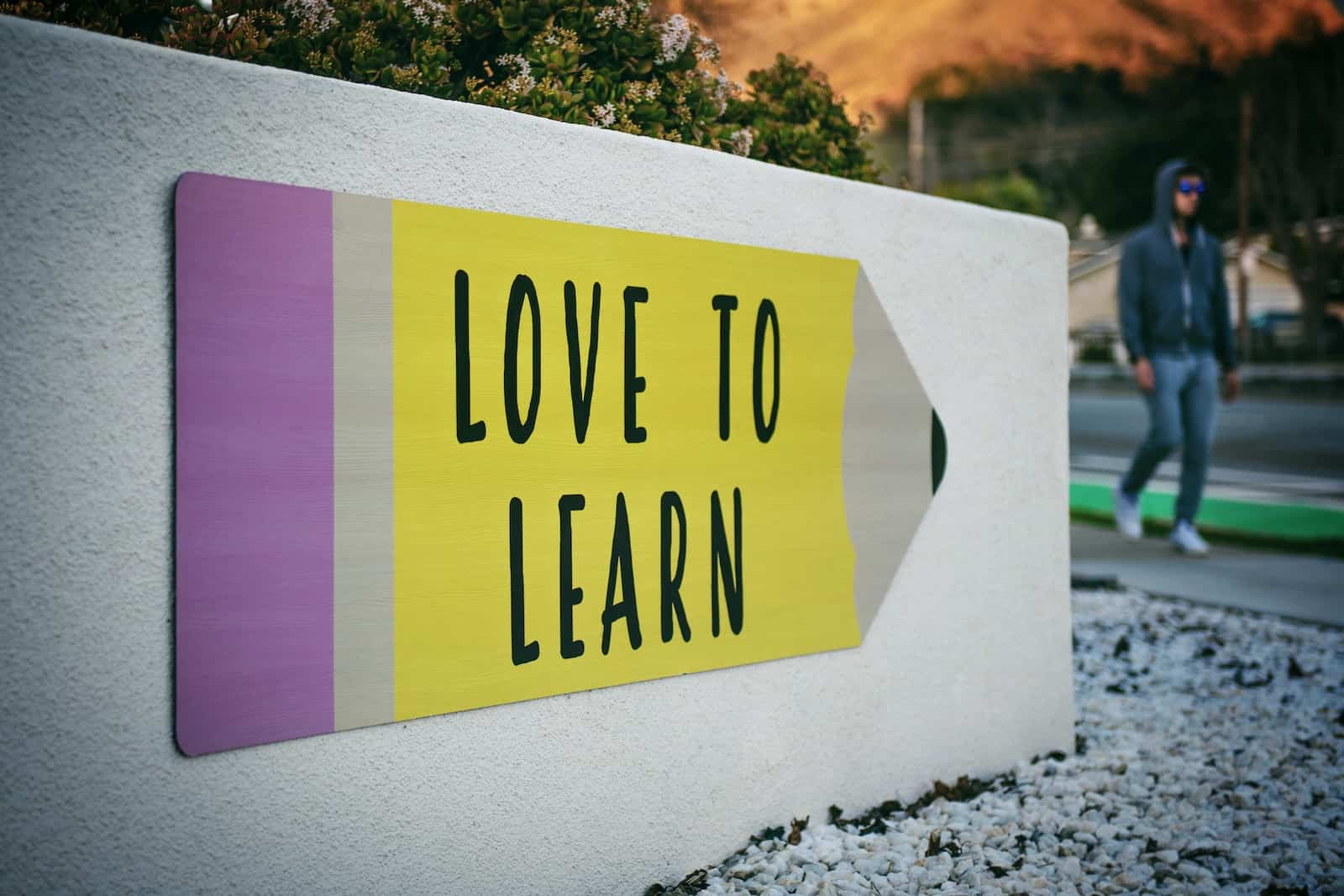Analyzing experiences is crucial in utilizing life lessons for personal development. By reflecting on the events and situations we have encountered, we can gain insight into their occurrences and learn how to leverage that knowledge for our benefit. Through this analysis, we can improve our understanding of our own emotions and become more skilled at resolving challenges. Consequently, this enables us to make progress towards attaining greater success in the aspects of life that hold the most significance to us.
It’s also critical to identify patterns or behaviors that have not served us well so far but may still be operating unconsciously within us. This allows us to make adjustments when needed as part of the process of personal growth. We must remain open minded about what these patterns might look like and strive for self-awareness rather than denial or avoidance.
In order to maximize the potential benefits from analyzing experiences, it’s necessary to develop an attitude of acceptance towards all aspects of ourselves – even those things which may seem difficult or uncomfortable. Doing so will help create an environment conducive to further exploration and learning from our past mistakes while keeping negative emotions at bay. Then, we can start applying the valuable lessons gained from each experience with greater confidence and ease!
Being Open To Challenges
When it comes to personal growth, the most successful people understand that challenges are necessary. To make meaningful changes in our lives and achieve our goals, we must be willing to take risks and challenge ourselves by facing our fears head-on. By pushing past what makes us uncomfortable, we can learn more about who we are and how capable we truly are of living courageously despite obstacles.
One way to start challenging yourself is to create ‘small wins’. These may include activities such as speaking up in a meeting or trying something new outside your comfort zone like taking an online class or participating in a group activity you have never done before. As you experience success with each small win, you will gain confidence and feel empowered to keep going and strive for even greater accomplishments.
Another approach is to reframe difficult situations from a place of positivity rather than negativity. Instead of seeing failure as the end result, view it instead as an opportunity for learning and growth. When you look at things through this lens, you will find that there is always something valuable within every experience that can help guide you towards achieving your desired outcome.
By shifting your perspective on life’s challenges, you can take control over any situation – no matter how daunting it may seem – and use those lessons to expand your own capacity for personal growth.
Reframing Perspectives
Life can be unpredictable and lessons learned through various experiences can help us to reframe our perspectives. Whether it’s a positive or negative experience, we can choose how we think about it and use the knowledge gained for personal growth. In order to shift your mindset, consider these top 10 ways of using life’s lessons:
1) Change your outlook – when faced with challenging situations, look at them from different angles. Doing so will help you understand why certain events happen in our lives and give you insight into what could have been done differently if needed.
2) Reconsider your attitude – take a moment to reflect on how you’ve been responding to circumstances around you. You may find that some thought patterns need adjusting or new ones need to be developed in order to handle future conflicts better.
3) Adjust your view – instead of allowing yourself to become overwhelmed by difficult times, try taking a step back and looking at things objectively. This will enable you to gain clarity on how best to move forward and make peace with whatever has happened.
These three steps are just the beginning of a journey towards self-growth; understanding that we all have the power within us to change our own destiny is key for realizing true transformation in our lives!
Connecting With Nature
We can learn so much from the natural world that surrounds us. Nature walks and nature connection can be incredibly powerful tools for personal growth, offering both physical and mental benefits. Here are some of the ways to use lessons from nature for our own development:
- Nature Walks – Taking a leisurely walk outdoors, surrounded by nature’s beauty, is an effective way to connect with ourselves on a deeper level. Nature appreciation provides moments of peace and tranquility in which we can reflect on life.
- Connecting with the sounds, sights, smells and textures around us helps ground us in the present moment and allows us to gain insight into ourselves.
- Appreciating the wonders of nature helps cultivate gratitude and joy while reducing stress levels.
- Nature Therapy – Spending time immersed in nature can provide healing effects during times of overwhelm or distress. Natural healing has been used as an alternative form of therapy for centuries because it offers restorative powers through its calming influence over body and mind.
- By taking part in activities such as bird-watching, gardening or hiking we give ourselves permission to slow down and reconnect with our inner selves; this leads to greater self-awareness and understanding.
- Being mindful of our environment also teaches us respect for other living creatures – something that many of us could benefit from learning more about!
These simple yet profound practices offer a unique opportunity to open up new channels of thought that may lead towards personal growth; allowing us to view life experiences differently, better appreciate our circumstances, and ultimately move forward in life with clarity and purpose.
Learning From Mistakes
Learning from mistakes is an essential part of personal growth. Mistakes provide us with valuable lessons that can be useful in our journey towards self-improvement. By carefully examining the mistakes we make, we gain insight into what works and what doesn’t work for us. This knowledge can then be used to inform better decisions going forward.
Another important way to learn from mistakes is by recognizing failure as a learning opportunity rather than something to feel ashamed about or beat ourselves up over. When faced with failure, it’s important to acknowledge the mistake, reflect on why it occurred, and come up with solutions to prevent similar errors in future endeavors. Accepting failures as part of the process will help you develop resilience and courage when approaching new challenges.
Finally, understanding how your past experiences shape who you are today can also be highly beneficial for personal growth. Reflecting on your successes and failures allows you to appreciate both sides of life’s journey – the highs and lows – which leads to greater appreciation for yourself and others around you. Taking this reflective approach helps create a more meaningful experience out of every setback or obstacle encountered along the path.
As we cultivate a sense of gratitude for life’s lessons, developing a deeper level of understanding becomes easier and more natural.
Developing Gratitude
Gaining insight from past mistakes is just one way to foster personal growth. Another important step towards increased self-awareness and healthier living is developing an attitude of gratitude. Gratitude helps us to look beyond the momentary struggles of life, allowing us to focus on what we are thankful for rather than dwelling on our losses or shortcomings. Expressing gratefulness can be achieved through several creative methods that offer a powerful boost in positivity.
To begin with, creating a list of all the things you have been blessed with and reflecting upon them daily is a great place to start cultivating thankfulness. This practice brings about mindfulness by shifting your perspective away from negative thinking into positive reflection. It serves as a reminder that although it may feel like life has dealt some tough cards, there is still so much worth being appreciative for. Additionally, thanking someone on a consistent basis can help strengthen relationships while building mutual respect between both parties involved. Being thankful fosters an atmosphere of goodwill and kindness which leads to more meaningful connections with others.
Finally, practicing mindful meditation allows us to open up space within ourselves where we can reflect deeply on the importance of expressing appreciation for even the smallest gestures or blessings received throughout our lives. Not only does this provide clarity regarding how fortunate we truly are; but also encourages deeper compassion and understanding towards other people’s experiences which will ultimately lead to greater contentment within oneself as well as those around us. By embracing these strategies, we can effectively shift our outlook towards finding joy in moments of adversity instead of merely enduring it – thereby paving the way forward towards better emotional health and personal growth throughout our lifetime!
Practicing Self-Awareness
Self-awareness is the cornerstone of personal growth. To understand ourselves better, we must practice self-observation and mindful living to become more sensitive to our own emotions, thoughts, and feelings. It’s also important to be aware of how others may perceive us in any given situation. With this knowledge, you can use your emotional intelligence to gain insight into yourself by exploring what drives your behavior and beliefs.
Being present with ourselves allows us the opportunity for honest reflection on our motivations and intentions. We can ask questions such as: What am I feeling? Why do I think that way? How am I impacting those around me? Self-exploration helps us identify our strengths and weaknesses so that we can make decisions from a place of understanding rather than fear or impulse.
By cultivating an attitude of openness towards ourselves, we open up possibilities for transformation and growth. This process requires patience and dedication; however, it will definitely pay off if you commit to practicing self-awareness regularly. As you learn more about who you are, you’ll be able start creating healthy boundaries that align with your values and beliefs.
Creating Healthy Boundaries
Creating healthy boundaries is like installing a fence around your garden – it keeps the good stuff in and the bad stuff out. It’s essential to setting limits, while protecting yourself from harm and respecting others.
When it comes to boundary-setting, it’s important to remember that everyone has different boundaries and expectations than you do. Respecting those boundaries is key for maintaining relationships with both family members and friends. Boundary setting involves learning how to say ‘no’ when something doesn’t feel right or align with your values. This can be really challenging at first but by practicing self-awareness, you will become more confident in being able to set these types of limits for yourself.
It also requires recognizing what is yours versus someone else’s responsibility, so you don’t take on things that aren’t appropriate for you to handle. Being mindful of this helps keep us grounded as we navigate our lives, knowing what we are responsible for and understanding where our boundaries lie. By creating healthy boundaries, we are taking steps towards having healthier relationships with ourselves and others.
Having strong personal boundaries allows us to cultivate empathy and compassion without compromising our own beliefs or needs.
Cultivating Empathy And Compassion
Cultivating empathy and compassion is an essential part of personal growth. When we practice empathy and compassionate listening, our emotional intelligence can increase significantly as we develop a deeper understanding of ourselves and others. The following table outlines three key elements that are integral to cultivating empathy and compassion:
| Element | Practice | Benefits |
|---|---|---|
| Empathy | Put yourself in the shoes of another person so you can understand their feelings. Ask questions, listen with genuine interest, relate back what they said etc. | Develops a stronger connection between people, increases understanding and appreciation for other people’s perspectives. |
| Compassionate Listening | Listen without judgment or criticism; be open to hearing different points of view even if there is disagreement or conflict; show respect for each individual’s opinion. | Helps to build trust between people by creating a safe space where everyone feels respected and valued. This helps strengthen relationships within teams or groups. |
| Self-Compassion | Treat yourself how you would treat someone else – with kindness, patience, forgiveness and love! Acknowledge your successes but also accept failure as it allows us to learn more about ourselves and grow from experience. | Improves self-esteem, encourages positive thinking patterns which lead to better decision making in life situations. Increases resilience when facing difficult challenges or obstacles in life. |
By taking time out to reflect on these various aspects of cultivating empathy and compassion, we become better equipped at managing our own emotions while also being able to appreciate those around us who may be struggling emotionally too. We will gain invaluable insights into the complexities of human nature which will help us foster meaningful connections with others regardless of differences in opinions or beliefs – this is critical in developing strong interpersonal relationships across all areas of life such as family, work colleagues and friends alike! Ultimately, integrating the practice of cultivating empathy and compassion into our lives results in greater satisfaction within ourselves as well as stronger bonds with those closest to us – something truly worth striving for on our journey towards personal growth!
Building Self-Confidence
The journey of cultivating empathy and compassion is the first step towards building a strong foundation for self-confidence. To reach our fullest potential, we must strive to develop a sense of inner strength that will enable us to have unwavering faith in ourselves. It’s time to take a bold leap forward into crafting your own recipe for success by nourishing your body and mind with positive affirmations, goal setting, and self-care.
Developing self-esteem begins with understanding who you are as an individual; what makes you unique, different from anyone else? What talents do you possess that make you special? Taking ownership of these abilities can be daunting but it’s essential if you want to increase your self-belief. Start by writing down three things about yourself that make up your core values or beliefs—these could range from physical attributes like being artistic or athletic, to intrinsic qualities such as having integrity or resilience. Once identified, work on improving each attribute through practice and dedication.
Improving one’s self-image also involves recognizing how valuable we are when compared to others; everyone has something wonderful they bring to the table and should never feel inferior due to external circumstances beyond their control. Make sure to foster relationships with individuals who support this idea of personal growth so that together you can create an environment where bolstering self-worth is possible. Through meaningful conversations, shared experiences and thoughtful advice we become even more aware of our worthiness which helps build confidence in ourselves and those around us.
Nourishing Your Body And Mind
Nourishing your body and mind are essential for personal growth. Eating healthy foods, exercising regularly, and getting enough rest allow you to maintain physical wellbeing that can be beneficial in many areas of life. Nurturing mental health is just as important; it helps to create an environment where creativity flourishes and problem-solving skills thrive. Additionally, having emotional balance provides a foundation from which we can build strong relationships with ourselves and others.
When nourishing our bodies and minds, it’s vital to remember that self-care should always come first. Taking the time out of each day to do something calming or enjoyable can make all the difference when it comes to achieving a sense of inner peace. Whether that’s reading a book, taking a yoga class, going for a walk – whatever works best for you – make sure you carve out some “me” time every single day!
Finally, don’t forget the importance of connecting with nature on occasion too. When we take regular breaks from technology, busy schedules and everyday stressors, we open up space for reflection and gratitude – two powerful tools for personal growth! As such, it’s key to find ways integrate these moments into daily life to restore both physical energy levels and mental clarity. With this kind of mindful awareness, developing a growth mindset becomes much easier!
Developing A Growth Mindset
According to research, 90% of successful people have a growth mindset. This means they have an attitude that is open to learning and developing through experiences. Having a growth mindset can lead to personal development, self-improvement, and the cultivation of positive habits.
Here are 5 ways you can use lessons from life to develop your own growth mindset:
- Acknowledge your mistakes – Recognizing when you make errors and taking responsibility for them helps you learn from experience rather than repeating it in the future.
- Change perspective – Instead of dwelling on negative experiences or outcomes, take time to reflect on how those moments can help shape who you become.
- Focus on what’s within your control – Rather than worrying about things outside of your influence, focus on making improvements where you do have power over results.
- Take risks – Don’t be afraid to try something new or take calculated leaps into uncharted waters; this will help push yourself out of comfort zones and expand horizons.
- Embrace failure – Mistakes provide valuable information about areas that need improvement or opportunities for further exploration. Facing failure with resilience encourages future success!
Developing a growth mindset requires conscious effort but pays off in dividends as it leads to continuous personal development throughout life’s journey. It involves accepting challenges while staying focused on progress instead of end goals so that each step taken brings its own rewards along the way. Taking time for reflection allows us to appreciate our achievements while simultaneously assessing if there may be any potential improvements needed in order to continue growing towards desired objectives.
Taking Time For Reflection
Taking time for reflection is an essential part of personal growth. Reflective moments allow us to look back on our experiences, identify what has been successful and unsuccessful, and adapt accordingly. Self-reflection gives us the opportunity to think about how we can best use the lessons life teaches us in order to make progress towards our goals.
Time mindfulness is key when it comes to taking advantage of reflective moments. Taking a few minutes each day to pause and review your activities from the past 24 hours allows you to gain insight into yourself – both positive and negative attributes – which will ultimately guide you toward success. Being mindful also means being aware of other people’s perspectives so that you understand their motivations better as well as recognize potential opportunities for collaboration or support.
When practicing self-review, it’s important to focus not only on successes but also on areas with room for improvement. Identifying weaknesses provides valuable insight into areas where additional effort may be needed, while acknowledging strengths boosts confidence and encourages further exploration into those topics. With this information we are able to adjust actions according to our findings and make more informed decisions related to achieving our goals.
By allowing ourselves these periods of introspection, we acquire a greater understanding of ourselves and the world around us that can help propel us forward in many aspects of life. It is through such thoughtful contemplation that meaningful change begins; change that leads down paths full of possibilities – if we remain open-minded enough to pursue them.
Seeking Mentors And Guidance
Once you’ve taken the time for reflection and introspection, it’s important to start seeking mentors who can provide guidance as you continue your journey towards personal growth. Identify people in your life or community that have qualities that you admire or respect – those are good candidates for potential role models and mentors. They can help you discover truths about yourself by providing a new perspective on situations and challenges.
It’s ok if these individuals don’t know they’re acting as mentors; this is often an informal relationship where both parties benefit from their interactions. Having someone to talk with and ask questions of helps us navigate complexity and reach better decisions when faced with difficult choices. Remember to be open-minded when seeking advice, while still trusting your own judgment at the end of the day.
Having a sounding board to discuss aspirations, goals, and values will help keep you focused on what matters most. Keeping an open heart when engaging with others can also lead to unexpected surprises and insights along the way!
Keeping An Open Heart
Having an open heart is one of the greatest gifts we can give ourselves and those around us. To have an open heart means to be accepting and understanding of others, even if we don’t agree with them or their beliefs. It also means that we take responsibility for our own emotions and feelings instead of placing blame on someone else. When we practice having an open heart, it allows us to become more compassionate, kinder, and better listeners.
One way to cultivate a more open-hearted approach in life is to practice being open-minded. This doesn’t mean giving up your values or beliefs; rather, it’s about allowing yourself to step back from any judgments you may hold towards other people or situations. Instead of automatically labeling something as good or bad, pause and consider all angles before making assumptions or taking action. Being open-minded helps us gain clarity into what really matters most in life – relationships over possessions, growth over stagnation, love over fear.
When living a heart-centered lifestyle, remember that healing takes time – both for yourself and for others who are going through tough times. Compassionate living involves offering a listening ear without judgement when needed and sending loving energy out into the world each day no matter how small the gesture may seem. Remind yourself daily that it’s OK not to have all the answers; some things will just take time until they make sense again.
Life is far too short not to embrace all its lessons with an open mind and heart – so why not start today?
Frequently Asked Questions
How Do I Know When I’m Ready To Take On A Challenge?
Have you ever wondered if you’re ready to take on a challenge? It can be hard to know when it’s the right time, and that uncertainty can stop us from making moves towards growth. But understanding how to assess our readiness is key for achieving personal success.
The process of self-assessment begins with gaining insight into your limits by asking yourself questions like: What challenges am I capable of tackling at this moment? And what do I need to learn in order to tackle more complex ones? These are important considerations as we strive to understand where our strengths lie, so that we can move forward confidently while challenging ourselves appropriately.
Taking risks is an essential part of personal development but they must always be calculated; assessing your own readiness prior to taking action will help ensure greater efficiency and effectiveness. When you evaluate yourself honestly and objectively, you set yourself up for success as well as learning experiences that add value to your life journey. By recognizing your current abilities and limitations, you become better placed to identify which challenges have potential for meaningful rewards.
We all have unique capabilities waiting to be tapped into – acknowledging them makes way for breakthroughs that could lead anywhere! So if you find yourself wondering ‘am I ready?’ ask the relevant questions, pay attention to the answers within and take those brave steps forward with a clear head and an open heart.
How Can I Practice Self-Awareness In Everyday Life?
Self-awareness is a vital part of personal growth and mental health. When we practice self-awareness, it helps us to recognize our emotions and understand how they affect our behavior. Knowing ourselves better can lead to more meaningful relationships and greater success in life. So, how can we practice self-awareness in everyday life?
There are several practical strategies for developing self-awareness. To start with, take time each day to reflect on your thoughts and feelings without judgment or criticism. Writing down what you’re feeling can be helpful as well — allowing yourself the space to express yourself without fear of judgement. Additionally, mindfulness practices such as meditation and yoga can help bring awareness to physical sensations and emotional states that might otherwise go unnoticed. Finally, paying attention to your interactions with others will give you insight into patterns in your behavior that may need adjusting.
The key is to make these activities part of your daily routine so they become natural habits rather than occasional efforts at self-improvement. Setting aside even just 10 minutes every morning for reflection or mindfulness exercises can build up over time until this type of self-care becomes second nature. Regularly assessing your progress gives you an opportunity to celebrate successes while also identifying areas where further work may be needed — both essential components of true personal growth!
By integrating these activities into our lives, we create the conditions necessary for lasting change that leads to healthier, happier living. Self-awareness isn’t something we do once; it’s an ongoing journey towards understanding ourselves better – one step at a time!
What Are Some Practical Ways To Create Healthy Boundaries?
Are you feeling overwhelmed and unable to set limits for yourself? It can feel like an impossible task to create healthy boundaries in order for personal growth, but it is possible! In this article, I will discuss some practical ways that you can use to create boundaries so that you can start living a more balanced life.
I understand why creating healthy boundaries can seem intimidating at times. After all, setting limits means saying no sometimes – something we don’t often enjoy doing. But when done correctly, boundary-setting has the power to not only help us stick to our values and goals, but also give us the freedom to live a more fulfilling life.
The starting point of setting healthy boundaries begins with self-awareness. Knowing what your needs are, understanding where your limits lie, and having the courage to communicate them clearly are essential steps in establishing strong boundaries. Once these elements have been identified, there are several practical measures you can take to put them into action: limit distractions by turning off notifications on your phone or blocking out certain hours during the day; practice positive affirmations daily; prioritize “me” time; be mindful of how much energy is spent on other people’s issues instead of tackling your own problems first; learn how to say ‘no’ without guilt or hesitation; express your feelings honestly and openly within relationships; and lastly, find ways to seek support from friends or professionals if needed.
In short, learning how to create healthy boundaries is key for achieving personal growth while leading a balanced lifestyle. With some mindful effort and dedication towards self-care practices such as those mentioned above, you’ll soon reap the rewards of improved confidence and clarity in life.
What Is The Best Way To Cultivate Empathy And Compassion?
When it comes to cultivating empathy and compassion, there are many paths one can take. But the most important is recognizing that we all share a common humanity — our feelings, experiences and struggles are universal, even if they manifest differently in each person. The best way to cultivate empathy and compassion is to practice being present with those around us. This means taking time to listen carefully to others’ stories without judgment or preconceived ideas. It involves actively trying to understand another person’s perspective and validating their feelings as legitimate while also providing support when needed.
By engaging in active listening, we can more easily build an environment of trust where people feel safe enough to open up about themselves, which helps foster real understanding between two individuals. We should also remember that empathy isn’t always easy – it requires patience and effort but the rewards for both parties make this investment worthwhile in the long run. Additionally, reflecting on our own emotions can be incredibly helpful for developing greater self-awareness and insight into how we respond to different situations; this type of inner work allows us to better empathize with others who may have had similar experiences as well.
Ultimately, cultivating genuine empathy and compassion takes time but it is possible if you’re willing put in the effort by creating meaningful connections with others through authentic dialogue and reflective practices. Through these methods, we can learn from each other’s differences and create deeper bonds based on mutual respect—allowing us not only grow personally but together too!
How Can I Develop A Growth Mindset Without Feeling Overwhelmed?
We all have the potential to develop a growth mindset and cultivate mental resilience, but it can feel overwhelming when we’re just starting out. It’s like climbing an endless mountain that never seems to end. But if you are willing to embrace the challenge with courage and determination, then developing a growth mindset is possible.
At its core, having a growth mindset means understanding that our capabilities and experiences aren’t fixed traits; they can be developed over time through learning, effort, and perseverance. To achieve this kind of mindset requires us to open ourselves up to new ideas while allowing for mistakes and setbacks along the way. By doing so, we become much better equipped at overcoming any feeling of overwhelm as well as achieving greater levels of self-improvement in life.
In order to truly master the art of cultivating empathy and compassion without getting overwhelmed by it all, I suggest taking small steps each day towards your goals. Focus on one area or task at a time instead of trying to do everything at once – Rome wasn’t built in a day after all! Additionally, take moments throughout the day to pause and reflect on what you’ve accomplished thus far. Celebrate even the smallest successes and remind yourself that progress takes time – especially when it comes to inner-growth work such as personal development or self-improvement.
By implementing these strategies into your daily routine you will begin seeing tangible results within no time at all: Your ability to overcome overwhelm will increase significantly while also enabling you create lasting change in your life
Conclusion
Life is full of lessons, some we learn from others and some that come through our own experiences. Every lesson provides an opportunity for personal growth; it’s up to us to recognize these moments when they arise and use them wisely. Like a climbing wall, life’s challenges can be daunting at times – but with the right amount of courage and self-awareness, you are able to reach the top where new opportunities await.
The key is to not let fear or doubt get in your way. Self-compassion will help you stay grounded when things don’t go according to plan. Creating healthy boundaries allows us to take on each challenge without feeling overwhelmed by every aspect of our lives. Finally, practicing empathy and understanding towards ourselves and those around us helps us see different perspectives and work together towards common goals.
It takes time and effort to grow as individuals, but investing in yourself now will pay dividends later on down the road. Life’s lessons provide insight into who we truly want to become – so make sure you seize this chance for personal growth with both hands!









